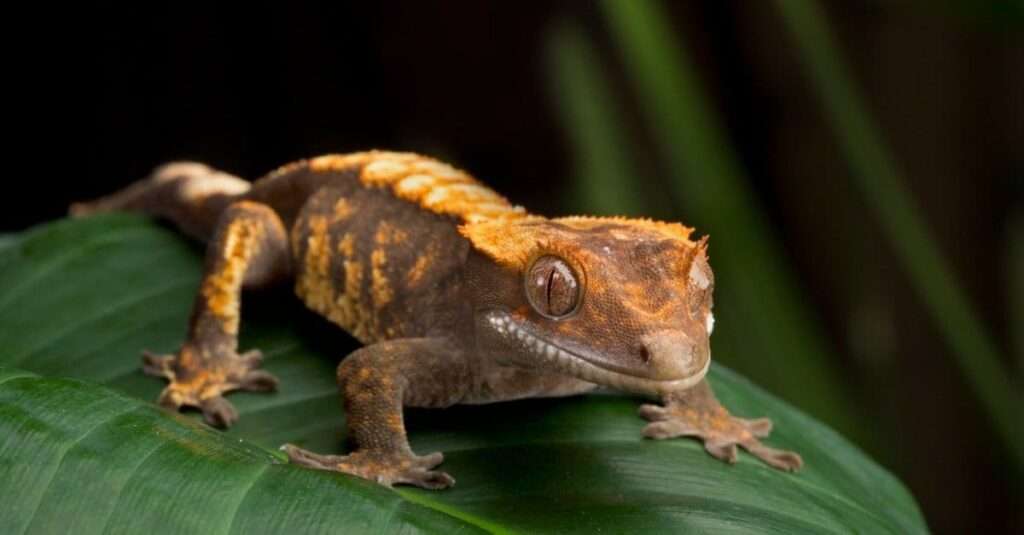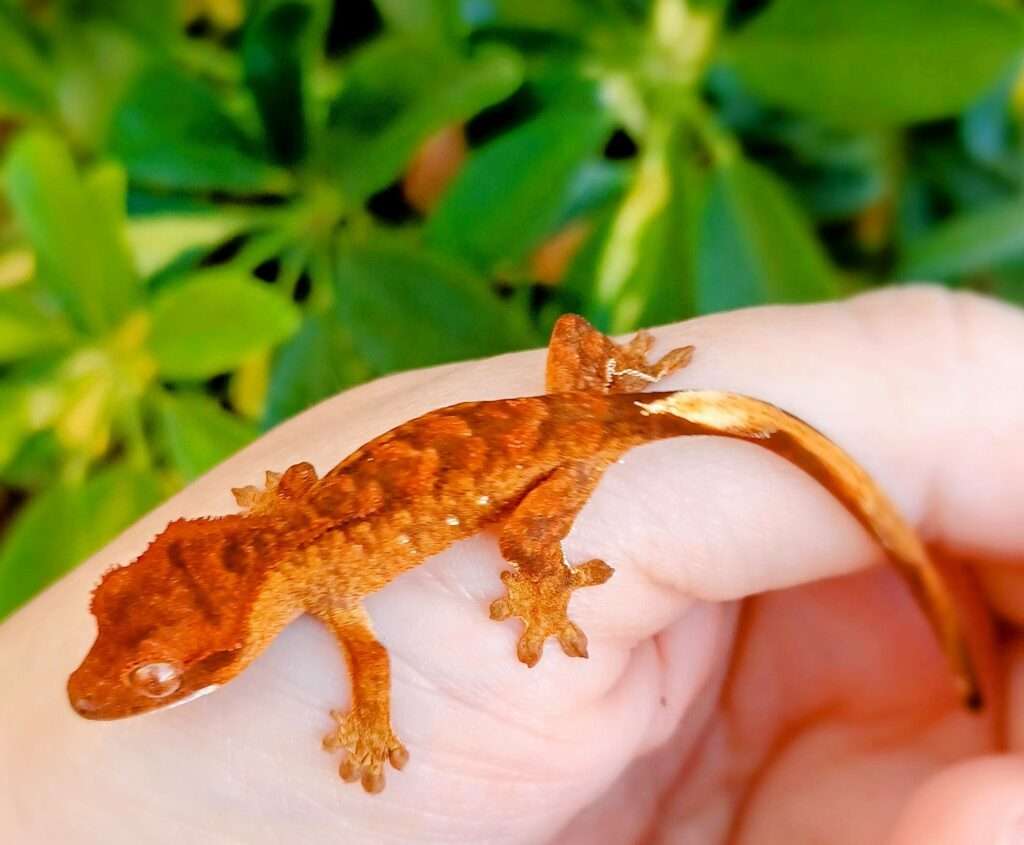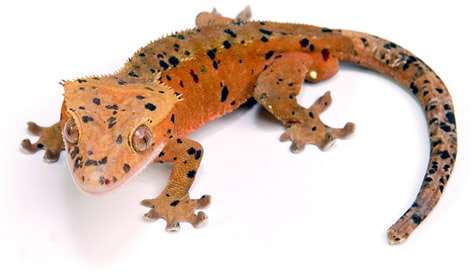
Description:
Scientific name: Gekko vittatus
Life span: 3-5 years
The bodies of white-lined geckos, which are native to Indonesia, are brown, green, or tan. Yet the white stripe that begins on each side of the head, converges on the back, and goes down to the tail—which has wide white bands—is where they get their name. Moreover, these geckos have unique toe pads that enable smooth movement along vertical surfaces.
Native Region/Habitat
Indonesia, Palau, New Guinea, and the Solomon Islands are among the places it is present.

Behavior:
When compared to the tokay gecko, a close relative, white-lined geckos are typically less aggressive. They are swift and delicate, yet they will still bite if they feel threatened. As a result, handling them is generally not advised unless absolutely required. These geckos enjoy climbing and are nocturnal, which means they are most active at night. They can live with other geckos, but two males should never coexist. Usually, they will engage in territorial conflict, sometimes to the death.
Care As a pet/In captivity:
Housing: Two white-lined geckos can live in a 20-gallon terrarium, although larger terrariums are preferable because these are active lizards. Choose a tall tank since white-lined geckos require vertical space for climbing. It works well to use a glass terrarium with a screened top or side for airflow. To encourage climbing, mix branches, driftwood, cork bark, bamboo, and vines in a variety of heights and directions.
Heat: For your white-lined gecko, create a daytime temperature gradient between 80 and 90 degrees Fahrenheit. The ideal nighttime temperature is between 70 and 75 degrees Fahrenheit. Daytime heat sources include ceramic heat emitters or heat lamps. Ceramic heat emitters or red nightlights are both suitable choices for use at night. Under-tank heating is an additional option.
Humidity: The ideal humidity range for white-lined geckos is between 65% and 75%. A hygrometer should be used to often check the humidity in the enclosure. Warm, filtered water should be used to spray the gecko’s enclosure many times per day. During night, when the gecko’s activity is at its peak, ensure the enclosure is well misted. White-lined geckos frequently consume water vapour left over from a mist.
Food and Water: Feed mostly crickets to white-lined geckos. For diversity, other insects like roaches, locusts, cutworms, and silkworms can be added. (Only occasionally feed mealworms and waxworms.) The size of the prey should resemble that of the gecko’s eye sockets.
Feed your gecko at night. Before giving any prey to your gecko, it should be gut-loaded (given healthy meals), and two to three times a week, it should be sprinkled with calcium supplement. Moreover, think about giving your animal a multivitamin once a week. But, before giving your pet any vitamins, always check with your veterinarian.
Adults only need to be fed every other day; children should be fed every day. Give the gecko as much prey as they will happily consume at once, and don’t let any crickets wander about the tank unattended.
Table





